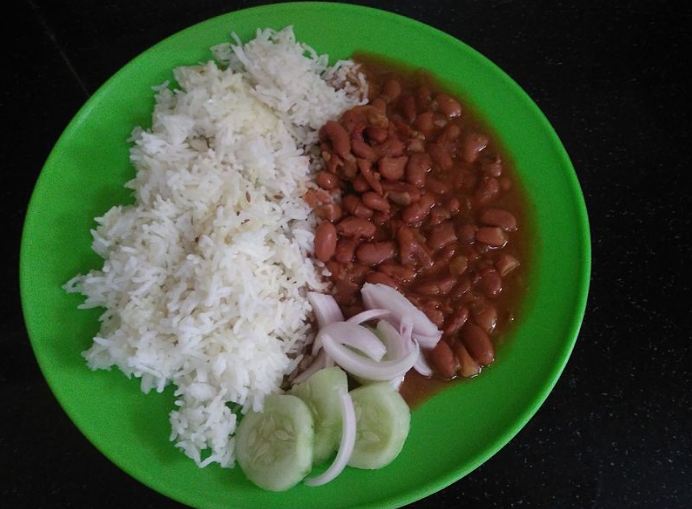Humans are cultivating beans and legumes from the very beginning. In today’s world, they are consumed and grown by many countries around the world and are found in multiple cultures. Both of them are not only budget-friendly but also hold high nutritional benefits as well. The legume is an umbrella term used for all the beans, pulses, and lentils. Beans are a subcategory of legumes.
Beans In a Nutshell
Legumes include different types of beans. By a rough estimation, there are about 400 types of beans present all around the world. Every culture has different names for them. They are so popular that there are multiple songs about them as well. The scientific name of beans is “Phaseolus vulgaris.” No surprise why we call it beans!
The best thing about beans is that they can complement almost every food and are considered a staple food in many countries. They are rich in protein, fiber, iron, and many other minerals. There are many different types of beans present in the market.
Types of Beans
Let’s dig in and have a look at different beans and their nutritional benefits.
1. Red Beans
They are also known as “small beans.” If we talk about their color, it is quite similar to a ruby stone and has a well-defined oval shape. In most American states, they are called Mexican Red Beans. Most people confuse red beans with kidney beans because of their similar appearance. Red beans contain a mild earthy flavor with a hint of sweetness and soft texture.
When cooking Mexican red beans, it is important to fully cook them before consumption. This is because half-cooked beans are harmful to digestion. They are more commonly used in Caribbean and Latin cuisine.
Nutritional Value per ¼ Cup: (Dried) 160 kcal
- Protein 10g
- Carbohydrate 28g
- Fiber 7g
- Calcium 60.1mg
- Fat 0g
2. Cannellini Beans
Also known as White kidney and Columbia beans, cannellini beans are one of the largest beans in the family of white beans. They are crunchier and richer than other beans in the family. Furthermore, they have a mild nutty flavor. If poured, they feel like a creamy mashed potato. Columbia beans are widely used for salads, soups, and stews. Cannellini beans are one of the most famous ones, and we recommend that you try them at least once. Their amazing taste will truly savor your taste buds.
Nutritional Value per ¼ Cup: (Dried) 100 kcal
- Protein 7g
- Carbohydrate 20g
- Fiber 6g
- Calcium 59.8mg
- Fat 0.5g
3. Great Northern Beans
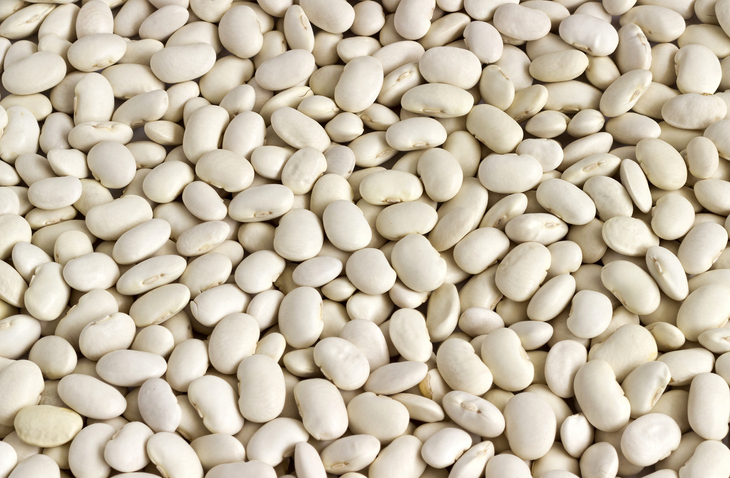
These are white beans often mistaken for cannellini or navy beans. Great Northern beans are less dense than other beans and have a nuttier flavor than their cousin. You can use these beans in soup, stews, purees, etc., due to their light texture and ability to absorb seasoning easily. Not to forget, they are also high in calcium.
Nutritional Value per ½ Cup (Boiled):
- Protein: 8.3g
- Carbohydrates: 21.1g
- Fiber: 7g
- Calcium: 15mg
- Fat: 0.5g
4. Pinto Beans
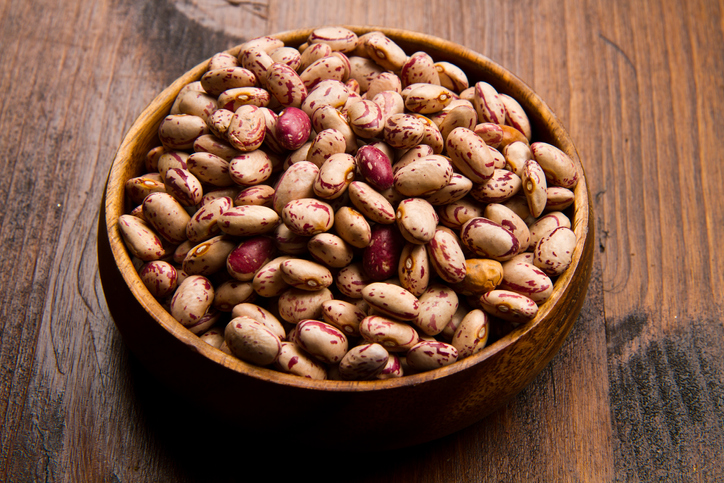
Pinto is a Spanish word meaning “painted.” These beans are orange-pink and have rust-colored spots. These pinto beans are also high in fiber and protein, with an overwhelmingly earthy flavor and a smooth texture. These properties make them ideal for dips, stews, and refried beans.
These beans are gluten-free and vegetarian-friendly, making them the most commonly used ingredient in many savory and sweet dishes.
Nutritional Value per ½ Cup (Cooked):
- Protein: 8 grams
- Carbohydrates: 22 g
- Fiber: 8g
- Calcium: 113mg
- Fat: 0.5 g
5. Fava Beans
Fava beans, also known as broad beans, are usually found fresh in the farmer’s market. They are green but change their appearance to brown later when dried. Fava beans taste sweet and can be eaten uncooked or cooked in soup or pasta. You can also roast or sauté them for different dishes and use them in a green salad.
One thing to keep in mind is that these beans should not be eaten by people suffering from a rare genetic condition called favism, as they can damage their red blood cells.
Nutritional Value per ¼ Cup: (Dried) 111 kcal
- Protein 10g
- Carbohydrate 22.2g
- Fiber 9.45g
- Calcium 46.6mg
- Fat 0.92g
6. Navy Beans
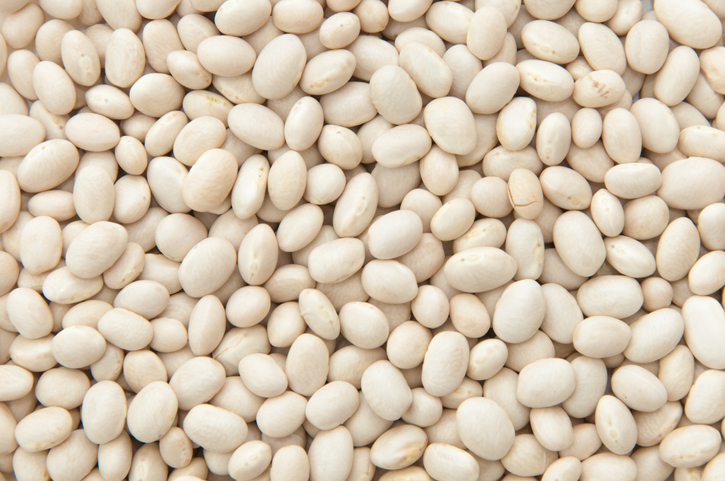
This legume has many names: haricot, pearl haricot, white pea, and Boston. They have a sweet flavor and a creamy texture, and like Great Northern Beans, they absorb the flavors of their surroundings. These beans are commonly used to make baked beans and traditional English snacks.
They are also high in fiber and help reduce the symptoms of metabolic syndrome. You can marinate them with bay leaves, garlic, and fresh herbs.
Nutritional Value per Cup (Cooked) 182 grams:
- Protein: 15g
- Carbohydrates: 13g
- Fiber: 19.1g
- Calcium: 15g
- Fat: 0.7g
7. Adzuki Beans

These beans are small and rounded and are commonly mashed into red bean paste and used in Asian desserts like cakes, pastries, ice cream, etc. Adzuki beans have a sweet flavor and a starchy interior, and you can also use them in more savory dishes like rice or leafy greens. They’re also filled with fiber and proteins, just like other legumes.
Nutritional Value per One Cup (Dried) 230g:
- Protein: 17g
- Carbohydrates: 57g
- Fiber: 17g
- Calcium: 64mg
- Fat: 0.2g
8. Lima Beans
A butter bean is a widely used name for lima beans in some countries. They are small in size with a hint of green and white color. They taste grainy, but their texture looks familiar to butter or creamy substance. Lima beans can also be used in a variety of dishes and are rich in fiber, calcium, protein, and carbohydrate content. Therefore, they fulfill all basic nutritional requirements.
Nutritional Value per Cup: (Cooked) 229 kcal
- Protein 14.6g
- Carbohydrate 42.4g
- Fiber 14g
- Calcium 52.8mg
- Fat 0.92g
9. Edamame

Edamame is young soybeans usually eaten while they are still in pods. These are soft and edible, so they are suitable for a protein-rich appetizer, snack, or salad topping, unlike ripe ones. Whether fresh or frozen, you can boil, steam, microwave, and even pan-sear edamame. It is best to season it with sea salt, red pepper flakes, and sesame seeds for the best taste.
Nutritional Value per Cup (Dried) 100 Grams:
- Protein: 11g
- Carbohydrate: 10g
- Fiber: 5g
- Calcium: 63g
- Fat: 0.2g
10. Soy Beans
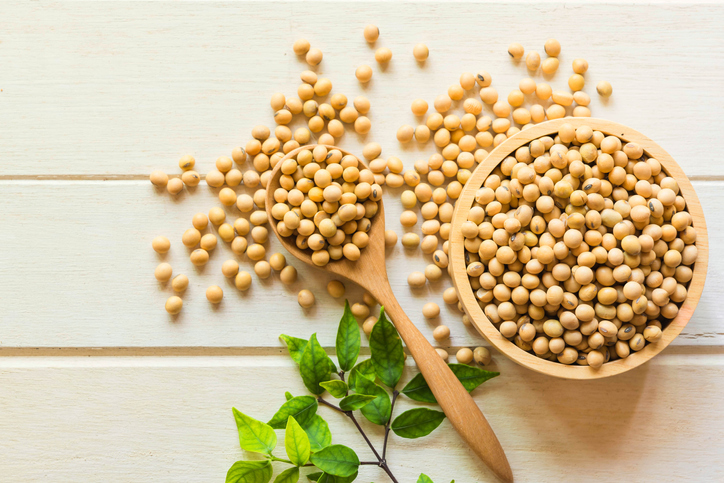
Unlike green and raw edamame, soybeans are dried and beige in color. Edamame is harvested when the beans are soft and still growing, whereas soybeans are harvested when they mature. Soybeans are used in various products, including soybean paste, tofu, soy flavor, etc.
These beans can also be eaten on their own. All you need to do is boil the soybeans and season with spices and herbs for a delicious, nutrient-dense soybean salad. Alternatively, for added texture, try adding them to quinoa.
Nutritional Value ¾ Cup (Dried) 100 Grams:
- Protein: 18g
- Carbohydrate: 8.3g
- Fiber: 6g
- Calcium: 74g
- Fat: 9g
11. Mung Beans
Mung beans are green in color with starch-like consistency. They go best with salads and casseroles. Before cooking, it is recommended to soak them overnight. They contain antioxidants that are beneficial for gut health as well as various other oxidant sources. Recipes cooked with mung beans are widely used in diet-friendly meals because they keep the stomach fuller for a longer time.
Nutritional Value per Cup: (Cooked) 187 kcal
- Protein 12.6g
- Carbohydrate 34.3g
- Fiber 13.7g
- Calcium 48.6mg
- Fat 0.68g
12. Kidney Beans
Native to America, these kidney beans are widely used all over the world in many different dishes. They come in both dried and canned forms. Besides, they have a variation of colors ranging from blood red to pale crimson. These beans have a solid nutty flavor along with a light sour undertone. One drawback of these beans is that they may require a longer time to cook and need overnight soaking. They work best for slow cooker meals.
Nutritional Value per Cup: (Cooked) 215 kcal
- Protein 13.4g
- Carbohydrate 37.1g
- Fiber 11g
- Calcium 87 mg
- Fat 1.54g
13. Chickpeas (garbanzo)
Garbanzo is a Spanish name for chickpeas. They are also known as Kabuli beans in most parts of South Asia. Chickpeas were widely used by our ancestors as they were used to make a variety of cuisines. Chickpeas are the star ingredient in one of the most popular dips that we all love: Hummus.
Roasted chickpeas made a wonderful yet healthy snack. The main feature of garbanzo is that they are versatile and easy to cook.
Nutritional Value per ½ Cup: (Cooked) 160 kcal
- Protein 10g
- Carbohydrate 26g
- Fiber 5g
- Calcium 80mg
- Fat 2g
14. Lentils
Varieties of lentils are available in the market. Lentils vary in color and size. Each lentil has a significant taste. They become soft and creamy after cooking. When added in soups and porridge, they can do wonders. All the varieties of lentils are rich in antioxidants. They are highly popular in the sub-continent and can be found almost in every household.
Nutritional Value per ¼ Cup: (Dried) 100 kcal
- Protein 8g
- Carbohydrate 23g
- Fiber 7g
- Calcium 20mg
- Fat 0.5g
Guidelines to Cook Beans
The first and the most important rule for cooking beans is that they must be soaked overnight or for several hours (in hot water) before cooking.
There is no need to soak canned beans as they are already cooked. Avoid cooking dried beans on simmer to slow heat as low heat won’t kill the toxins.
Always wash beans as they may contain some dust particles.
Check the beans after every 10 to 15 minutes to determine the consistency according to your cuisine.
Conclusion
Beans are something that provides us with vital health benefits in terms of nutrition. They are a great snack item and can be used in a variety of dishes too. Above, we have mentioned the different types of beans that you can try out. It is our recommendation to try out all of them and then pick your favorite ones to be used in a variety of other dishes as well.

